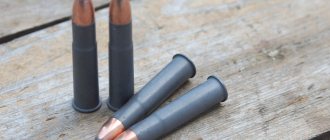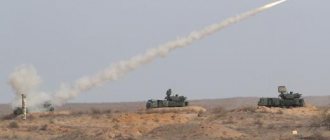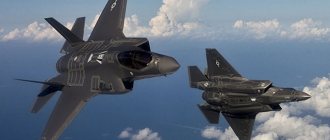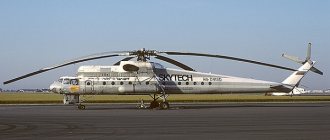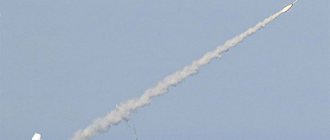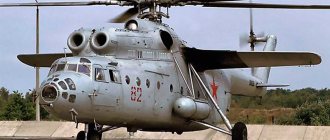The US Navy's missile attack on the Shayrat airbase once again brought to light the topic of comparing precision weapons. American Tomahawks remained for a long time the main American ax of war and were considered the most progressive weapons.
However, the appearance of the Caliber missile system and firing several thousand kilometers across the territory of the two countries called into question the sole leadership of the Tomahawks.
"Desert Storm" and the powerful "Relief"
Tomahawk cruise missiles rightfully bear the title of the most popular cruise missiles in the world. These missiles were used during Desert Storm, and American ships used the same missiles to help “process” Yugoslavia. Tomahawks also worked during the American invasion of Iraq in 2003, and the experience of using cruise missiles in such conflicts is perhaps invaluable.
A cruise missile is a kind of bulldozer with a couple of hundred kilograms of explosives, clearing the way for tactical aircraft, and any other aircraft. The destruction of enemy targets by American PR specialists has always been presented as an exceptional technology available only to Americans. Numerous shootings and confirmations of affected objects can still be found on video hosting sites.
At the same time, the American development is presented as a unique technology that has no analogues in the world. However, American manufacturers are not entirely right about this. More precisely, they are not right at all. Long before the Tomahawks began their combat campaign across the territories of countries in different parts of the world, the Soviet Union already had a land complex with cruise missiles.
Looking ahead a little, it is worth noting that it was the 3K12 “Relief”, located on the basis of an eight-wheeled tractor, that, due to the mobility of the complex and the range of the missiles, was one of the first to be included in the treaty on the reduction of medium- and short-range missiles.
In this case, data on the cross-country ability of the chassis, engine power and other characteristics should be omitted, because the rocket itself deserves the main attention. The self-propelled launch chassis included six winged KS-122 with a range of up to 2900 (!) kilometers.
Almost three thousand kilometers of range in the conditions of “continental” combat operations and the presence of a nuclear warhead could lead to the fact that the Relief complexes could conduct combat work practically without leaving the unit’s location.
Created in response to the deployment of “land-based” Tomahawk missiles, the GLCM could in the future successfully solve combat missions, but the unique land-based missile system and its “twin brother,” the naval missile system did not receive many years of combat service.
The INF Treaty signed in 1987 between the USSR and the United States put an end to the unique development, and the batch of self-propelled launchers assembled for experimental military use was sawed up in the presence of an international commission.
"Caliber" that we saved
According to experts, real combat work could be performed by the most modern modifications of Tomahawk missiles, equipped with a special guidance system and capable of “loitering” in a square in search of a target. However, here, as it turned out, there are a number of limitations.
“Let's start with the fact that such a missile can actually approach a target unnoticed without using basic navigation systems. But this technique only works if the enemy has no means of detection and control at all, and no air defense as such.
Well, think for yourself, a normal, well-armed and trained enemy will allow air targets to stay in their own airspace for a long time, and even pose some kind of threat?” explained military expert Alexey Leonkov in an interview with the Zvezda TV channel.
According to Leonkov, the approach to the massive use of SLCMs is relevant only under a certain set of conditions, simultaneously with which a number of restrictions coexist.
Thanks to these limitations, it is impossible to fully and effectively use SLCMs against an enemy with a developed and layered air defense system. This statement is easily confirmed by the intercepted Tomahawk missiles in Iraq and Yugoslavia, and these are not the most developed countries in terms of military technology.
For a demonstrative flogging within the framework of one’s own foreign policy, a massive missile strike may be suitable, but for real combat work one needs to take what will really work. The operation of the Kalibr-NK complexes in this regard is an indicative and unique phenomenon for several reasons.
Firstly, practically foreign experts and special services buried Russian cruise missiles a long time ago. The “Relief”, cut into needles, and a number of other promising projects seemed to have plunged the domestic “rocket” industry and science into the Stone Age.
However, the goal of the first live firing of the ships of the Caspian Flotilla was achieved, and the plan for international noise and hysterical screams regarding this event, it seems, was completely exceeded.
Russia suddenly had a technology ready for serial production and installation on ships, thanks to which it became possible to hit any target through the territory of several states.
Secondly, the effectiveness of Russian cruise missiles in comparison with American ones turned out to be twice as high, and the cost was lower.
“If we evaluate soberly, then in the issue of using cruise missiles against ground targets, we have a clear victory. The Americans spend, on average, three Tomahawk missiles on one target; we spent one, in rare cases two, missiles of the Caliber complex on each target.
Strict standards and regulations in this regard are the merit of the Soviet military. Two missiles per target is already considered a large overexpenditure, so the constant combat indicator is one missile per target,” explained military expert Alexey Leonkov.
Walk, walk like that
One of the stumbling blocks and the subject of ongoing controversy surrounding the comparison of the “Caliber” and “Tomahawk” complexes, in addition to the long-term “operating experience” of the latter, is the consumption of such ammunition per target. In this sense, the example of the US Navy and the use of Tomahawk missiles against targets in all known conflicts is alarming to experts.
On the one hand, a large stock of missiles collected under government contracts makes it possible to launch a strike with hundreds of missiles at once. However, the feasibility and effectiveness of such strikes have been questioned over and over again.
During Operation Hollow Storm in 1991 alone, 20 surface ships and submarines were deployed to use Tomahawk missiles. In total, the US Navy fired 297 missiles at targets in Iraq, of which (due to various reasons) 285 reached the targets.
Experts have not yet undertaken to evaluate the effectiveness of the Tomahawk strike, since a massive strike was carried out in close cooperation with electronic warfare aircraft, and even at night. The Iraqi military, even despite the scale of the attack and the technical equipment of the American army, fleet and air force, managed to intercept about 30 cruise missiles.
Despite the fact that cruise missiles made it possible to significantly reduce the losses of manned aircraft, there was no need to talk about total superiority on the battlefield even against a technically inferior enemy.
Oddities with target assignments for Tomahawk missiles increased during air and missile strikes on Yugoslavia. According to experts, in total more than 700 (!) cruise missiles were used against 200 targets in Yugoslavia, including sea-based cruise missiles.
According to experts, over 40 missiles were intercepted by air defense systems. Moreover, it was in Yugoslavia that the main problems with the use of sea-based cruise missiles were revealed. Difficult weather conditions, a dense and well-organized structure of air defense troops, as well as the difficult nature of the terrain played a cruel joke on high-precision weapons.
However, even despite significant difficulties, the tactics of using a standard triple echeloned strike (KR, air defense breakthrough, strike) justified itself. The high consumption of missiles per target did not bother any of the American military.
The use of cruise missiles in Afghanistan was no less widespread. According to experts, a total of more than 650 cruise missiles were used against the Taliban, who had no serious air defense systems other than anti-aircraft artillery.
Experts note that the same tasks, albeit in a slightly longer time, could have been solved by tactical aircraft, but a banquet of almost a billion dollars against warehouses and other facilities seemed reasonable to the American military.
The use of Tomahawk missiles in 2003 against Iraq turned out to be almost identical to the others. Despite the fact that the Iraqi air defense forces were largely deprived of clear coordination and communication, in total, up to 700 cruise missiles were again used against targets in the country, of which approximately 30 were lost.
Experts estimate the average target load of Tomahawk cruise missiles over all years of combat work at the level of four missiles per target, which, without a doubt, is a lot and extremely expensive.
Experts have repeatedly discussed the effectiveness of Tomahawk missiles in the context of defunct wars involving the United States.
The conclusion that the experts came to is disappointing: the real combat effectiveness of American “axes” differs significantly from the declared ones, and massive missile strikes are carried out on the territory of countries not so much to destroy targets, but to intimidate and react to the international community.
The recent attack by the US Navy destroyers Porter and Ross on the Syrian airbase of Shayrat also fits into the overall picture of combat effectiveness. According to the data received, 59 Tomahawk cruise missiles were fired at the airbase, but the results of the shooting and the condition of the airbase, the runway of which remained intact, give rise to concern.
"Caliber" vs "Tomahawk": which is cooler?
Russia's military actions in the Middle East have become a fact.
Until recently, this seemed unrealistic. But what is truly striking is not even this, but the quality of the military operation against the Islamic State group and other jihadists, including those so dear to Washington. Attacks on militant bases are carried out by military aircraft and cruise missiles. At the same time, bombers, fighters and attack aircraft show their highest efficiency, their weapons meet all modern requirements, and the skill of the pilots is literally at their best.
The Russian Aerospace Forces - both people and equipment - are receiving a real baptism of fire. What is used in the war against international terrorism?
The Su-24 front-line bomber is well known in many armies of the world, including in the Middle East. However, the Su-24M, which carry out missile and bomb attacks on designated targets in Syria, are bombers that have undergone a very deep modernization, after which they can be considered completely new machines.
At the end of the 20th century, the Su-24 front-line bomber was considered one of the best combat vehicles in its class. It was put into service on February 4, 1975. Over the past years, it has undergone several deep modernizations. The bomber has two powerful AL-21F-31 engines, allowing it to carry 8 tons of combat load, bombs and missiles - both in the internal compartments and on the external sling. The crew consists of two people - a commander and a navigator. A distinctive feature is the variable geometry wing.
Now the veterans of the Aerospace Forces - the Su-24 and Su-24M - are gradually being replaced by much more modern Su-34s, which are undergoing combat testing in the Middle East.
The Su-34 is the world's most modern front-line bomber. This is the only aircraft in the world that combines the capabilities of a maneuverable fighter, long-range interceptor and front-line bomber.
Its equipment allows it to detect air targets at a distance of 120 kilometers, track and process ten targets simultaneously, and fire at four of them at once - this is a high figure. As a bomber, the Su-34 can carry out missile and bomb strikes against all types of small and moving targets, including sea targets.
The aircraft has 12 hardpoints, on which it can carry up to eight tons of various weapons; it is also equipped with a 30-mm GSh-301 cannon. Crew - 2 people. Maximum speed is 1900 km/h, flight range is 4000 km.
The multifunctional heavy fighter Su-30 was originally designed for sale abroad, and its first version was called Su-30K - “commercial”. On its basis, various fighter aircraft were created for the air forces of China, India, Indonesia, Malaysia, and other countries. Reviews about this aircraft are very good. Moreover, during joint exercises, Indian pilots flying their Su-30MKI almost always emerged victorious in training air battles with American and European fighters.
Not long ago, Su-30SM fighters began to enter service with the Russian Aerospace Forces. They are distinguished by super-maneuverability due to the deflectable thrust vector of the engines and can operate against all types of air, ground and sea targets. In the skies of Syria they provide cover for bombers and attack aircraft. But if necessary, they will be able to successfully carry out high-precision strikes against ground targets.
By the way, air cover for Russian aircraft is quite justified, although IS does not have fighters. But, as is known, NATO combat aircraft operate in this region, primarily the US Air Force. And we must be prepared for any surprises.
Suffice it to recall the story: on April 22, 1945, two American Mustang fighters attacked a plane piloted by Ivan Kozhedub. The allies in the anti-Hitler coalition did not know who was attacked. The battle lasted a couple of minutes, the Mustangs were shot down. There have been other cases of unprovoked attacks by American fighters on aircraft with red stars on their wings.
That is why we can expect any unpleasant surprises from those who are proposed to be considered allies. In order to discourage them in advance from the desire to “make a mistake” and “accidentally” attack Russian bombers, Su-30SM are patrolling the skies of Syria. By the way, reports have already appeared in the American press that US Air Force pilots observed combat aircraft of the Russian Aerospace Forces through their sights. Let them watch.
And - just the latest news. NATO pilots participating in strikes against Islamist positions in Iraq were allowed to return fire in the event of an attack by Russian warplanes. This statement was made by one of the British newspapers, citing sources in the Ministry of Defense of the United Kingdom.
“Nobody knows what the Russians will do next,” this is how the British military department formulates its position. “We don't know how they will react if they meet a Western fighter. When planes fly at supersonic speeds, airspace quickly becomes crowded. There could be a collision, or the Russian pilot could be mistakenly shot down.”
If this is true, it means that NATO pilots have been given carte blanche to destroy Russian combat aircraft. Prove later whether the “drying” was shot down by mistake, or whether it attacked first.
But, before attacking our fighters in the skies of Syria, let them remember the American attack on Ivan Kozhedub’s car.
In addition to fighters and bombers, Su-25 attack aircraft, veterans of battles with Islamic terrorists, are widely used. The chief designer in the group of creators of the Su-25 was the former commander of the T-34 tank, who became one of the most brilliant aircraft designers of the 20th century - Oleg Sergeevich Samoilovich. Maybe that’s why the attack aircraft became a truly flying tank, inheriting this comparison from the IL-2, but receiving much more serious protection. The protection systems account for more than a ton of armor, including titanium. Particular attention is paid to critical components and elements - the cockpit and fuel system.
The pilot is almost completely protected from fire from any gun with a caliber of up to 12.7 mm, and in the most dangerous directions - with a caliber of up to 30 mm. The Su-25 was widely used in Afghanistan, where it showed truly amazing survivability. There were cases when planes returned to base with 150 holes. According to experts, none of the existing jet combat aircraft can withstand this.
This combat vehicle, which first took to the air on February 22, 1975, has not lost its power to this day. But time itself demanded deep modernization, and it was carried out by the team of the research and production concern Sukhoi Attack Aircraft. Today, the aircraft is equipped with completely new avionics equipment, exclusively domestically developed and produced. Avionics allows the use of more modern missiles, including guided missiles, as well as adjustable bombs. It became possible to hit not only all types of ground targets, but also conduct air combat.
The modernized Su-25 received GLONASS satellite navigation. According to experts, it allows you to set the end point of the flight with an accuracy of up to ten meters. That is, even in conditions of limited visibility, the attack aircraft accurately approaches the designated target and delivers its crushing blow.
The practical ceiling of the Su-25SM3 reaches ten thousand meters. Without refueling, it can fly 1850 kilometers. As a result of all the innovations, the combat effectiveness of the new-old aircraft has increased almost threefold; now the quality of modernization is being tested in real combat conditions.
Well, missile and bomb strikes are carried out both by conventional high-explosive bombs and by guided bombs. They were used in Afghanistan, but in limited quantities, and then they were not reported in the media. Therefore, the impression was that there are no “smart” ammunition in domestic arsenals at all.
Eat. As a result of airstrikes on terrorist bases, a large amount of military equipment was destroyed, including tanks, as well as well-protected structures that housed command posts, arsenals and workshops for the production of sabotage equipment. There were no misses. Every bomb and every rocket hit exactly the target he designated.
This was an unpleasant surprise not only for the militants, but also for NATO, and primarily the United States. They were sure that the Russians could only attack squares from the air. But hitting an open window with a rocket is the privilege of Western armies.
You can reveal the secret. The missile and bomb weapons used by our pilots are not the latest word in the domestic defense industry.
The KAB-500 adjustable bomb was adopted by the Soviet Air Force in 1976. These bombs have a unique planning property, which allows them to be dropped 70 kilometers from the target. They can be equipped with a propulsion system, which makes it possible to further increase the range of their drop from an aircraft. The KAB-500 television homing head does not need to see the target of attack itself; just landmarks on the ground are enough, and it will hit the target. However, there is a KAB-500 with an additional guidance system based on both GLONASS satellite navigation signals and laser illumination.
The Kh-29L laser-guided missile was put into service in 1980. For its time it was the best in the world. She has not lost her leadership even now. It has a powerful warhead, making up half of its launch mass. The combination of more than twice the speed of sound, a very heavy and durable warhead gives the warhead high penetrating power. The Kh-29L is capable of penetrating one meter of highly durable concrete covered with three meters of soil.
Last week there were reports of the use of aerial bombs with the obscure name SPBE, which means “self-aiming combat element,” against the armored vehicles of the “Islamic State.” This is a truly “smart” ammunition that hits only military equipment. And it’s worth talking about it in more detail.
The creators of this ammunition were awarded the last USSR State Prize in our history - in 1991. SPBE developers from NPO Basalt were several years ahead of the Americans. Similar ammunition began to appear in the West relatively recently. The bomb is a cylinder containing an explosive and a thick copper plate. A parachute system and a homing module are attached to the side of the cylinder.
After a concentration of enemy armored vehicles is detected on the ground, bombers or attack aircraft are sent to the specified point. Bombs are dropped at altitudes from 400 to 5000 meters. Three small parachutes, which open at a given altitude, provide stabilization and slow the fall speed to 17 m/s. Simultaneously with the opening of the parachutes, the infrared target search system is turned on. It reacts to the heat of the propulsion systems of combat vehicles. After detecting the target and determining the detonation point of the warhead, which occurs at an altitude of about 150 meters, the bomb is directed at the enemy vehicle using special rudders that correct its flight.
The SPBE warhead is interesting. One explosion forms an impact core weighing one kilogram from a copper plate. The second gives it an acceleration equal to two kilometers per second. This is more than an anti-tank sub-caliber projectile. The cannonball penetrates 70 millimeters thick armor at an angle of 30 degrees.
Since the bomb is aimed only at the running engines of combat vehicles, it cannot accidentally deflect and hit some civilian object. Probably, it can be considered a humane weapon, destroying only military equipment.
It is worth repeating: all this, very high-precision missile and bomb weapons, was created more than thirty-five years ago in the USSR. Do NATO and IS know what has been created in Russia already in this century?
However, the real sensation was the launch of high-precision missiles from the Caspian Sea towards terrorist positions in Syria. They caused a real shock among military experts - domestic and foreign. One must think that the Pentagon has also fallen into a state of stupor.
Before October 7, few people knew that our arsenals contained missiles similar to the American Tomahawks. Not in appearance, but in characteristics. It seemed that only the United States could afford to fire missiles at its enemies from a safe distance of thousands of kilometers. American military propagandists were happy to replicate video footage of Tomahawks launching—for some reason always at night—from ships located in the Indian Ocean. At the same time, missiles were flying towards Afghanistan, and towards Iraq, and even towards the Balkans. The Americans, probably, could not even imagine that they would someday see how Russian “Calibers” - also at night, as if in mockery - were launched from the missile ships of the Caspian flotilla and flew towards Syria.
Indeed, at numerous international arms exhibitions, where missiles designated as “Caliber” have been present since 1993, their flight range was indicated as no more than 300 kilometers. Therefore, some even very competent domestic specialists simply did not believe the information from the Ministry of Defense: they thought that the military department had made a mistake either in the name of the missile or in its flight range.
The fact is that the missile technology non-proliferation control regime prohibits manufacturing countries from exporting missiles with a range of more than 300 kilometers. Therefore, at exhibitions, this indicator appeared in the explanations for “Caliber”.
Work on the “Caliber” was carried out in Sverdlovsk, at the Novator Design Bureau at the turn of 1970-1980, almost in parallel with the development of the winged “Tomahawk” in the USA. Our rocket, like the overseas one, was created to be universal. It could be carried by combat aircraft, it could be installed on land chassis, on ships and submarines. The flight range varied from several hundred to thousands of kilometers.
In the 21st century, Caliber has undergone significant modernization. Using new technologies and new materials, the designers of the Yekaterinburg-based Novator created virtually a new generation of rockets. They were not shown at international arms shows.
But on September 17, 2012, successful test launches of KRBD 3M14 missiles of the Kalibr-NK complex were carried out from the Dagestan missile ship, from the Caspian Sea. The abbreviation KRBD just means “long-range naval missile.”
Very soon they went into mass production. Now they are armed with warships, submarines, including the latest multi-purpose nuclear-powered Yasen class, and they are also in service with strategic aviation. There is information that the coastal defense forces of Crimea and diesel submarines of the Black Sea Fleet are equipped with Calibers. The warhead of the "Caliber" can be conventional - high-explosive and nuclear.
Unlike the subsonic Tomahawk, our Calibers can fly over a wide range of speeds: from subsonic to three times the speed of sound.
At the same time, the accuracy of the hit, whether at a distance of 300 or 2500 kilometers, is the same, as the developers say, “in the peg.” Experts believe that the Caliber is several times more effective than the Tomahawk.
Its power is evidenced by the following characteristic: to destroy a huge Nimitz-class aircraft carrier, three hits from missiles equipped with a conventional high-explosive warhead are sufficient. It’s probably no coincidence that NATO’s Caliber missile systems are classified as “Sizzler,” that is, “Incinerator.”
The missiles are capable of penetrating any air and missile defenses. The flight takes place at an altitude of 50 to 150 meters, and when approaching the target, the missile drops to twenty meters and delivers a blow that is truly impossible to prevent. “Calibers”, launched from ships that were part of the Caspian flotilla, carried out truly targeted strikes on the most important ISIS targets, causing serious damage to the terrorists. The following were destroyed: a plant for the production of shells and explosive devices, command posts, warehouses for ammunition, weapons and fuels and lubricants, as well as terrorist training camps.
The launches of long-range cruise missiles of the Kalibr-NK complex were carried out from the southwestern part of the Caspian Sea from the boards of four missile ships: Dagestan, Grad Sviyazhsk, Uglich and Veliky Ustyug. 26 launches were carried out. 11 targets were hit in Syria.
There have already been reports on the Internet from supposedly knowledgeable experts that there are no missiles in Russia with such characteristics that allow them to shoot one and a half thousand kilometers and hit the target. Yes, in the West they really want to believe in this, because they think that, having won a political victory in the Cold War, they were able to destroy the entire defense-industrial potential of modern Russia. And in general, what could the “vatniks” create before they began to enter their “civilized” and very high-tech world?
I'll have to remind you. Having a worse element base than in the West, Soviet designers were the first in the world to create a television system for targeting anti-aircraft guided missiles of the S-125 complex. Without turning on their radars or unmasking themselves, the anti-aircraft gunners launched missiles from ambushes and shot down planes whose equipment did not detect the operation of other people's radars. This was almost half a century ago. Let us remember the high-precision Oka, which has never been surpassed by anyone in the world - first of all in accuracy. Let us remember the Pioneer missile system, which became a threat to all of Western Europe.
There is a lot to remember. And be glad that much of what was achieved in the Soviet defense industry was preserved in the Russian defense industry.
Sergey Ptichkin
WE RECOMMEND:
PUTIN'S GEOPOLITICAL GAME
7 secrets to the success of Russia's military operation in Syria
Türkiye vs Russia
Obama is preparing three wars against Russia
US geopolitics at your fingertips
Secrets of Russia's military operation against ISIS
Russian killer of the American dream
In contact with
Published: 10/15/2015 13:22
How did a missile with a flight range of 300 kilometers change the strategic balance of power in the world?
Many people remember how unexpected the first launch of Kalibr on October 7, 2015 was for the general public. The generally accepted range of these missiles in the media was 300 kilometers, but they flew from the Caspian Sea to Syria five times longer - 1,500 kilometers - and through the difficult terrain of Iran and part of Iraq. By the way, along the way, both of these states gave their consent to the flight of Russian missiles. It is worth recalling that when the United States launched strikes on target countries, they did not ask anyone for permission, although their Tomahawks flew “in transit” through the territories of sovereign states to Afghanistan.
According to international practice, when sending military aircraft through the airspace of other countries, it is necessary to obtain permission to fly them. In 2015, Russia created a new precedent. For the first time in the world, not airplanes, but cruise missiles flew over countries not participating in the war, in agreement with them. Several “Calibers” passed high in the sky, which, quite possibly, without warning, would not even have been seen by the air defense of Iran and Iraq. Russian missiles have opened a new page in the regulation of international airspace.
However, let's return to the range of the "Caliber". How did 300 kilometers turn into one and a half thousand? The fact is that even during the development of “Caliber” they decided to make it not a highly specialized system for a global nuclear strike (like the “Grenade” was), but a flexible modular tool. The naval version of the "Caliber" has a range of up to 500 kilometers (with a conventional warhead - presumably 375 kilometers). At the same time, in the final section, thanks to an additional boost stage, it is capable of traveling at supersonic speeds up to Mach 2.7-2.9. According to the commander of the Black Sea Fleet, in such a supersonic anti-ship configuration, Caliber can control an area of up to 800 thousand square kilometers (S = πR², where R = 500 kilometers). This is not so little - from the Russian Black Sea coast it is capable of threatening NATO ships entering the Black Sea through the Bosphorus.
However, last October, ships of the Caspian Flotilla used a version for land attacks. It is deprived of a supersonic jerk in the last segments of the trajectory (and the additional stage that provides it) - after all, the air defense of ground targets is weaker than the air defense of an aircraft carrier group, for which the anti-ship "Caliber" is tailored. But in exchange for the jerk, the sustainer stage of the land version has more fuel. Therefore, it can fly with a high-explosive warhead of 450 kilograms for 1,500 kilometers, and with a lighter nuclear warhead for 2,600 kilometers. In the latter version, its carrier - no matter whether it is a ship or a submarine - holds at gunpoint more than five million square kilometers of the earth's surface.
Last year’s launch showed the general public for the first time that with the Calibers, the balance of power has irreversibly changed not only off the Russian coast, but throughout the entire Middle East, and, in fact, throughout the world. Anyone can take a ruler and make sure that Russian “gunboats” with a displacement of less than 1000 tons are reaching from the Caspian Sea with missiles from China to Italy and from Saudi Arabia to the capital of Germany. But there are carriers of “Caliber” not only in the Caspian Sea.
Export Godfather
In 1991, the world changed. The defense industry needed to survive, which is why, based on the “Grenade” and new developments, the designers created a rocket, which later became known as the Club 3M-14E. This was an export version, cut down to fit short NATO standard torpedo tubes. In order to meet the standards of international agreements on the export of missile weapons, its range was limited to 300 kilometers. At that difficult time, when the Ministry of Defense was not interested in new high-tech weapons, hopes for export were fueled by new developments. All of them came in seriously handy at the beginning of the 21st century, when it became clear that cooperation between Russia and NATO was not developing at all as planned by the Young Democrats who came to power in 1991.
Since 2004, the Russian side, reacting to US actions, has stated that it no longer considers itself bound by the obligation to store nuclear warheads for cruise missiles on shore. Soon, testing began on a new missile in the dimensions of the old Granat, but using new technologies tested on the export shortened version.
The future "Caliber" received a fundamentally new elemental base for guidance systems. It uses an inertial navigation system to accurately hit the target, as well as a radar homing head to correct its trajectory in the final section. He also has a GLONASS receiver. Improvements have sharply reduced the circular probable deviation of the new product. And although its exact value is unknown (the data is secret), during the exercises, as representatives of the fleet claimed, it was possible to place the missile five meters from the target. Thanks to this, even in the non-nuclear version with a warhead of 450 kilograms, the Caliber became a dangerous adversary.
